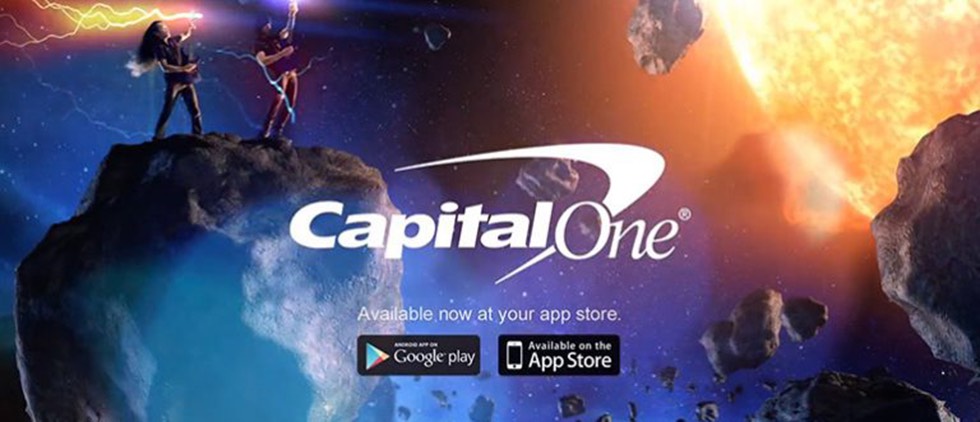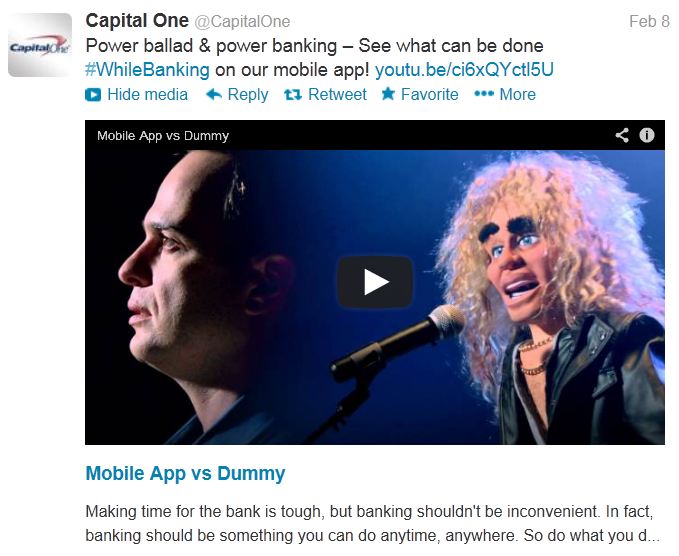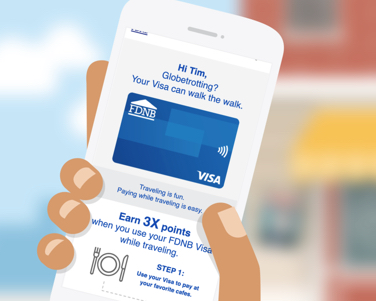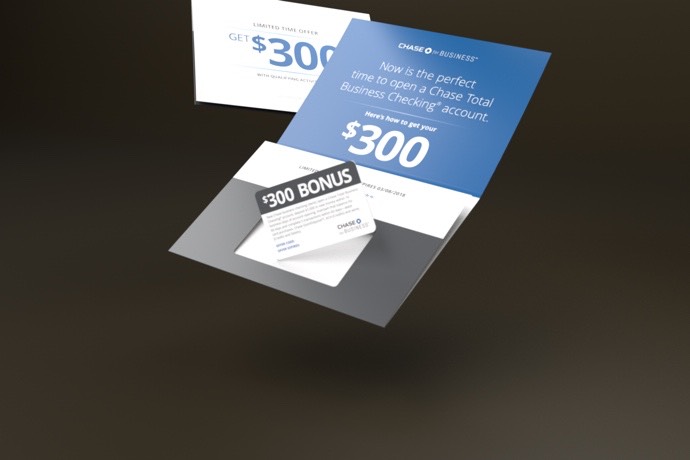Capital One Promotes Mobile App with #WhileBanking Campaign

 In December, we detailed how Barclaycard was promoting its PayTag concept: touting the ease and convenience of its contactless mobile payment option as an antidote to the frantic holiday season. Now another card issuer, Capital One, is tapping a similar theme as it markets its mobile banking app with the tagline, “Do What You Do While Banking.”
In December, we detailed how Barclaycard was promoting its PayTag concept: touting the ease and convenience of its contactless mobile payment option as an antidote to the frantic holiday season. Now another card issuer, Capital One, is tapping a similar theme as it markets its mobile banking app with the tagline, “Do What You Do While Banking.”
In addition to some paid advertising, the campaign includes a Twitter hashtag, #WhileBanking, a microsite and a series of YouTube videos. As Capital One explains in the description of one of the campaign videos, “Making time for the bank is tough, but banking shouldn’t be inconvenient. In fact, banking should be something you can do anytime, anywhere.”
Presently, the goal of the microsite is to collect user-generated content for potential use in future Capital One spots and videos. A mock Twitter feed, labeled “Latest Submissions,” showcases consumers’ “favorite mid-mobile banking activities” (only after they’ve passed muster in a behind-the-scenes approval process, of course). The result is a trickle of Twitter-style confessions about what customers claim to do #whilebanking, including “bathing my cat,” “running from a horde of zombies” and waiting in line for a burrito.
We’re interested to see how the spots that incorporate user ideas will round out the #whilebanking campaign. As it stands now, it lacks authenticity… something critical when demonstrating a product claim. Here some suggestions for pushing this marketing effort, and others like it, to the next level:
Hold tight to relevance.
The sample videos produced by Capital One are over the top (banking while playing guitar on a “flaming asteroid flying through the darkest reaches of space” or banking while DJ’ing in the most exclusive clubs in Europe).

As attention-grabbers and imagination starters to solicit consumer ideas, “over the top” is probably OK, especially for this maverick Viking-branded card issuer. However, the bank should take care to make sure that the creative assets are not so absurd as to be irrelevant. Particularly when marketing banking benefits (vs. cards), consumers must be able to connect with campaign content.
Find a point of differentiation.
It seems logical that, as a concept, #whilebanking should sell consumers on the idea of a mobile app to make and monitor financial transactions. The problem? Consumers, for the most part, are already sold on the idea of mobile banking. In fact, we’ve seen them clamor on Facebook not only for their banks’ launches of mobile apps but also for updates to the apps, as they did this past fall on Ally Bank’s Timeline, for example.
This means that very soon consumers are going to accept only those mobile products and apps that make their lives easier. “Convenient” ceases to be a unique-to-you claim when it’s already part of the popular definition of mobile. What else differentiates this Capital One product? The bank ought to establish itself in mobile banking just as it did as a card issuer: by developing its own niche.
Carefully and thoughtfully select the best vehicle for the campaign.
Content platforms matter… and they impact the authenticity of the marketing message. If real-time isn’t possible, Twitter’s probably not the best platform to mimic. To begin interacting with the campaign, users visit the microsite and find an entry form which prompts them to “write 140 characters or less.” Of course, the 140-character requirement signifies Twitter to most of us.

However, the field does not result in a tweet… only in the submission of your idea for the Capital One microsite feed (and possible video spot). Since the submissions have to be approved, this is not a live feed.
And despite appearances, the microsite content is not connected to Twitter at all. It isn’t until the end of the process that users are given the option to post to Twitter: “Now if your idea gets selected, we’ll contact you. In the meantime, share your brilliance across the Twittersphere!” Only by re-typing the idea and authenticating with a Twitter account does the user’s text make it to the social platform. The platform, of course, is the point at which Capital One loses control of the process… and the content related to the hashtag.






